What Is the Art Tool That Allows You to Click and Delete Colors in Art Programs
Flat Coloring¶
So you lot've got a cool black on white cartoon, and now you lot want to color it! The affair we'll aim for in this tutorial is to get your line art colored in with flat colors. So no shading just even so. We'll be going through some techniques for preparing the line art, and we'll be using the layer docker to put each color on a separate layer, so nosotros can hands access each color when we add shading.
Note
This tutorial is adapted from this tutorial past the original author.
Agreement Layers¶
To fill line fine art comfortably, it'southward best to take reward of the layerstack. The layer stack is pretty awesome, and it's one of those features that make digital art super-convenient.
In traditional art, information technology is not uncommon to first draw the total groundwork earlier drawing the subject field. Or to first draw a line art and so color information technology in. Computers have a similar way of working.
In programming, if you tell a computer to draw a red circle, and so afterwards tell it to draw a smaller yellow circle, you will see the small yellow circle overlap the red circle. Switch the commands around, and you lot volition not see the yellowish circle at all: it was drawn before the carmine circle and thus 'backside' it.
This is referred to equally the "drawing order". So like the traditional creative person, the computer will first describe the images that are behind everything, and layer the subject and foreground on top of it. The layer docker is a way for yous to command the drawing order of multiple images, and then for example, you can have your line fine art drawn later than your colors, meaning that the lines will be drawn over the colors, making it easier to make information technology not bad!
Other things that a layer stack can exercise are blending the colors of unlike layers differently with blending modes, using a filter in the layer stack, or using a mask that allows you to make parts transparent.
Tip
Programmers talk about transparency as ''Alpha'', which is because the 'a' symbol is used to present transparency in the algorithms for painting 1 colour on top of another. Usually when you see the give-and-take ''Blastoff'' in a graphics program, just think of it as affecting the transparency.
Preparing your line art¶
Put the new layer underneath the layer containing the line art (drag and driblet or use the upwards/down arrows for that), and depict on it.
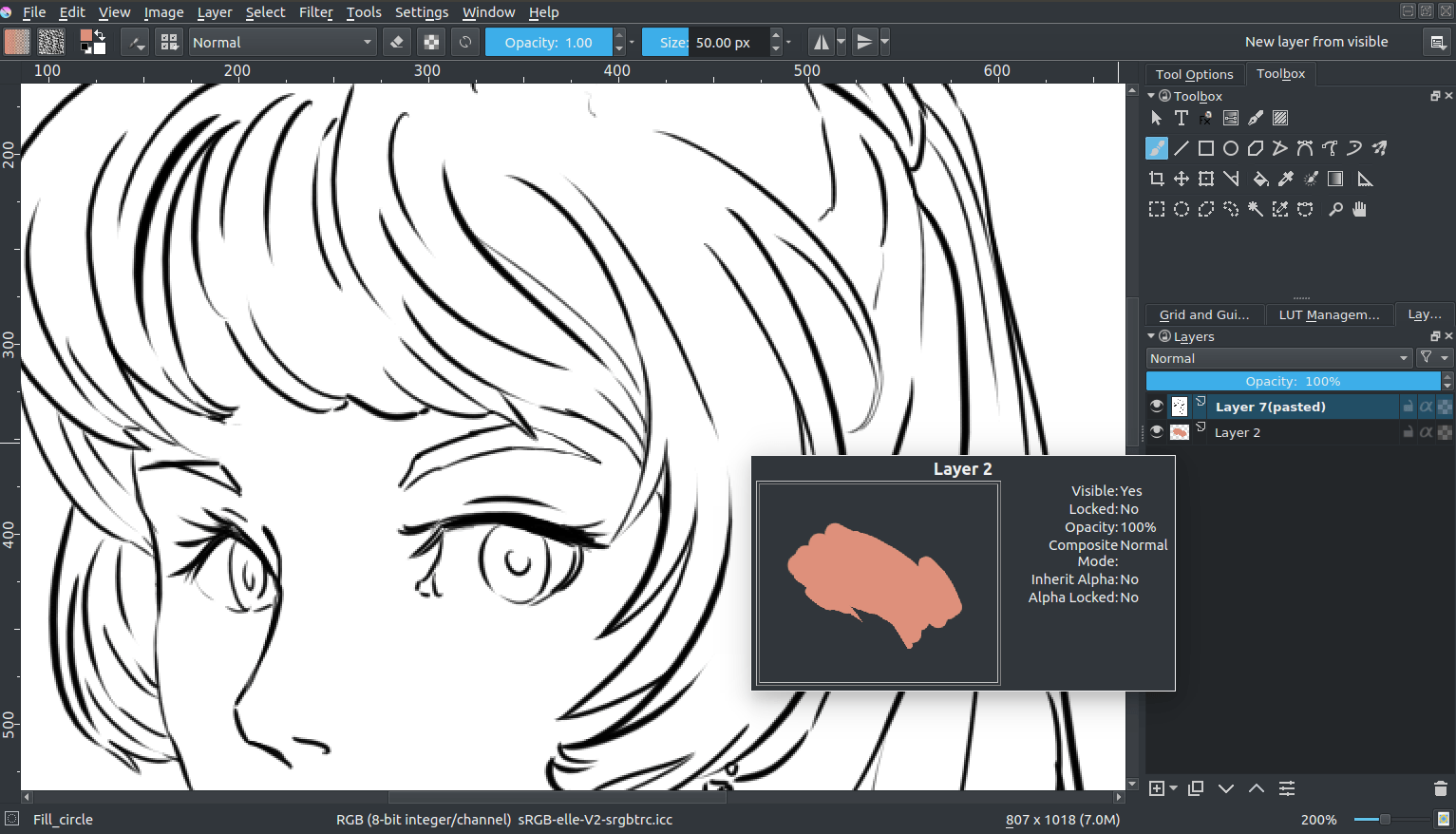
…And notice nothing happening. This is because the white isn't transparent. You wouldn't really desire it to either, how else would you make convincing highlights? So what we first need to practice to color in our drawing is set our line fine art. There's several methods of doing so, each with varying qualities.
The Multiply Blending Mode¶
And so, typically, to get a black and white line fine art usable for coloring, you can set the blending mode of the line art layer to Multiply. Yous exercise this by selecting the layer and going to the drop-down that says Normal and setting that to Multiply.
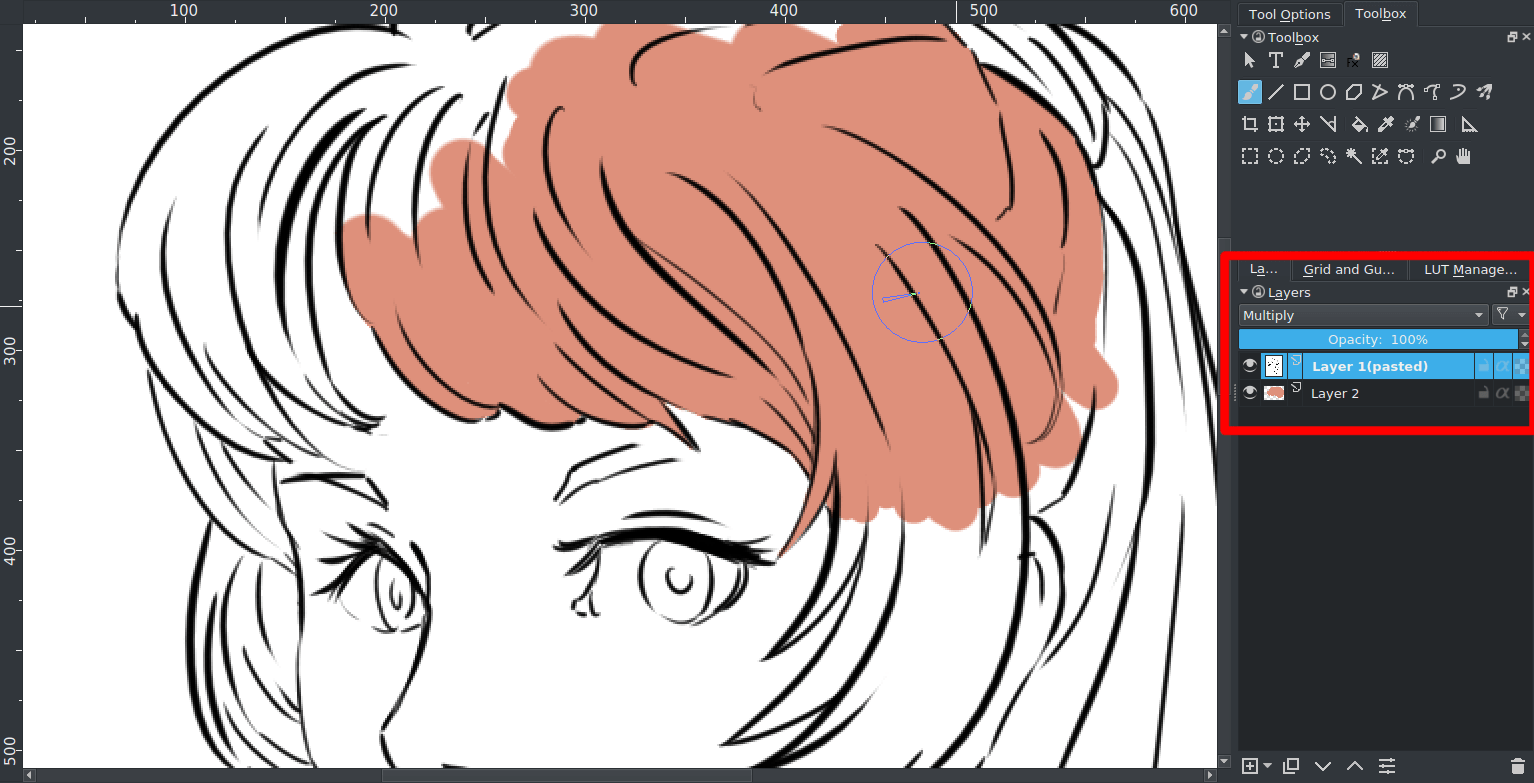
And so you should be able to see your colors!
Multiply is not a perfect solution however. For example, if through some image editing magic I make the line art blueish, it results into this:
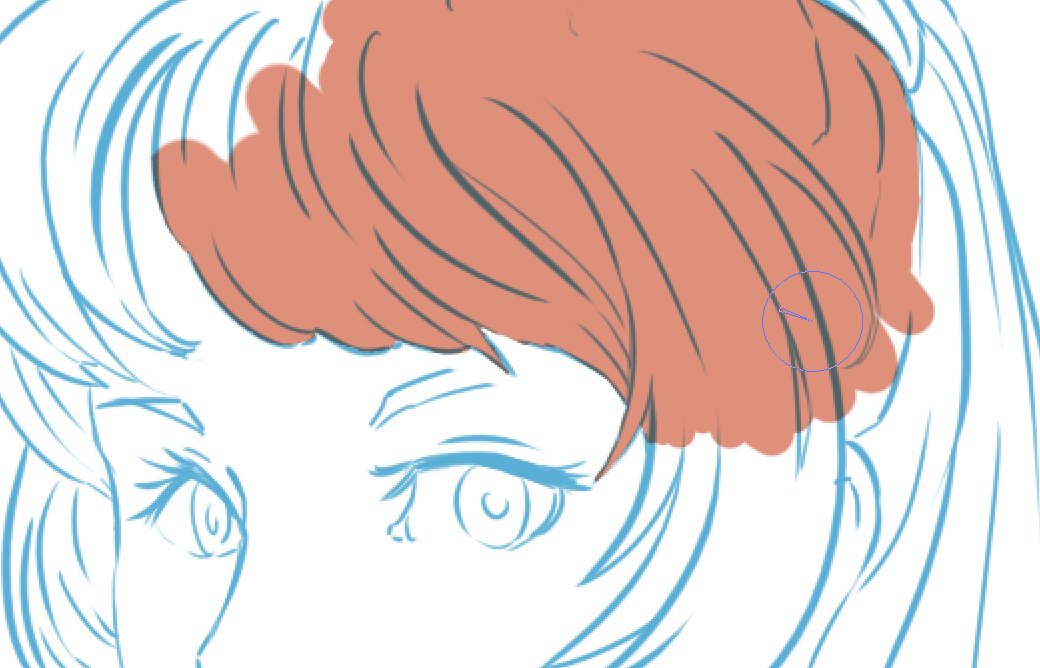
This is considering multiply literally multiplies the colors. So it uses maths!
What it first does is take the values of the RGB channels, then divides them by the max (because we're in 8bit, this is 255), a procedure we call normalising. Then it multiplies the normalized values. Finally, it takes the consequence and multiplies it with 255 once more to get the effect values.
| Pink | Pinkish (normalized) | Bluish | Blue (normalized) | Normalized, multiplied | Event | |
|---|---|---|---|---|---|---|
| Cherry | 222 | 0.8705 | 92 | 0.3607 | 0.3139 | eighty |
| Dark-green | 144 | 0.5647 | 176 | 0.6902 | 0.3897 | 99 |
| Blue | 123 | 0.4823 | 215 | 0.8431 | 0.4066 | 103 |
This isn't completely undesirable, and a lot of artists use this issue to add together a fiddling richness to their colors.
Advantages¶
Piece of cake, can work to your benefit even with colored lines by softening the look of the lines while keeping nice contrast.
Disadvantages¶
Not really transparent. Is a fiddling funny with colored lines.
Using Selections¶
The 2d method is ane where we'll make it really transparent. In other programs this would be done via the channel docker, just Krita doesn't practice custom channels, instead it uses Pick Masks to shop custom selections.
-
Duplicate your line art layer.
-
Catechumen the duplicate to a selection mask.
 the layer, then .
the layer, then .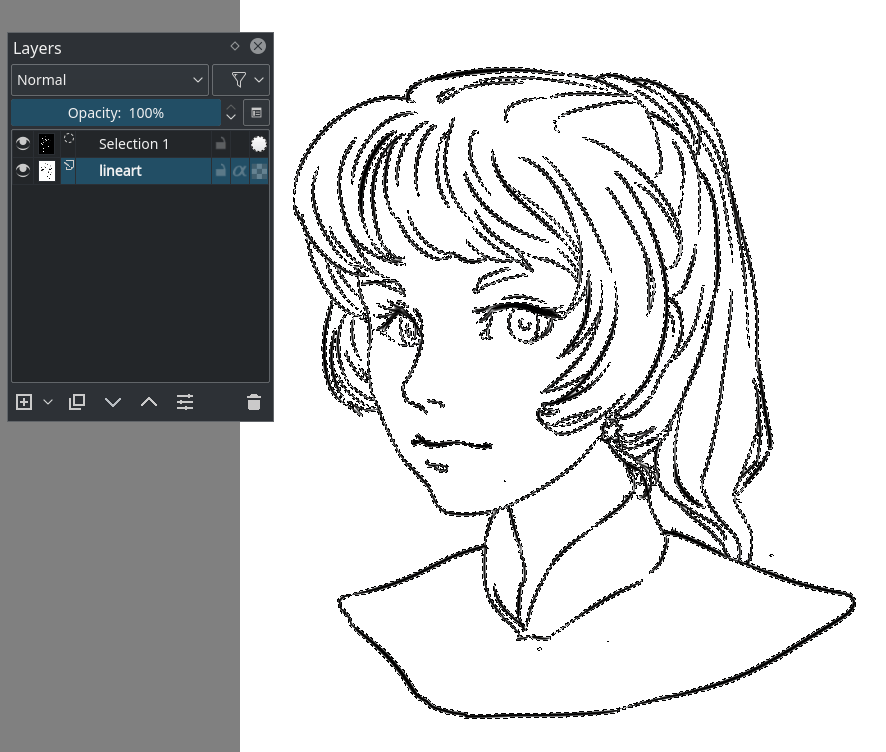
-
Invert the selection mask. .
-
Make a new layer, and do .
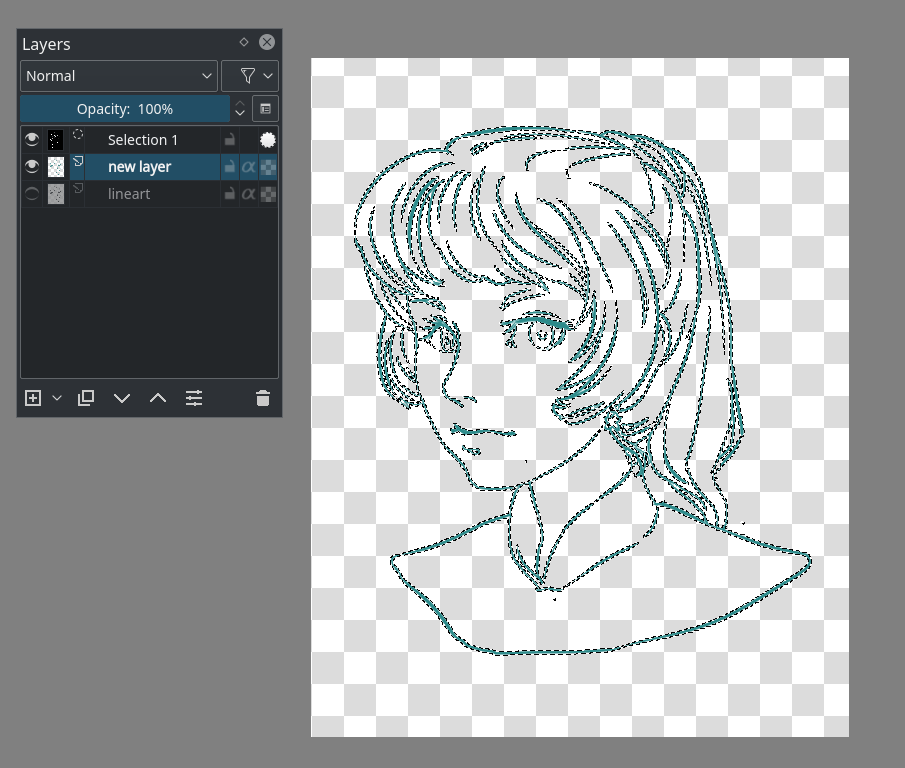
And you should now accept the line art on a split layer.
Advantages¶
Actual transparency.
Disadvantages¶
Doesn't work when the line art is colored.
Using Masks¶
This is a simpler variation of the above.
-
Make a filled layer underneath the line fine art layer.
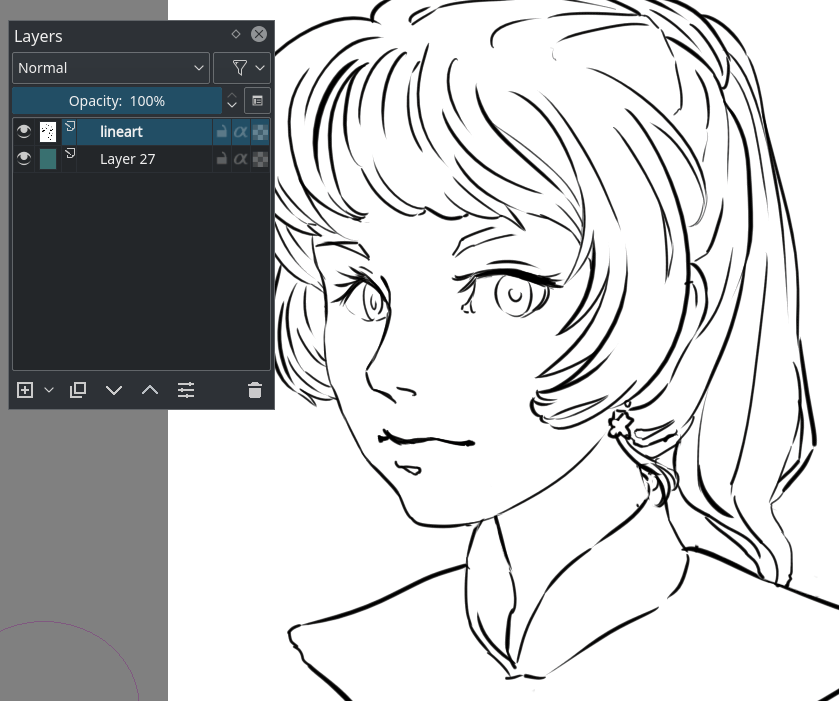
-
Catechumen the line fine art layer to a transparency mask
 the layer, then .
the layer, then .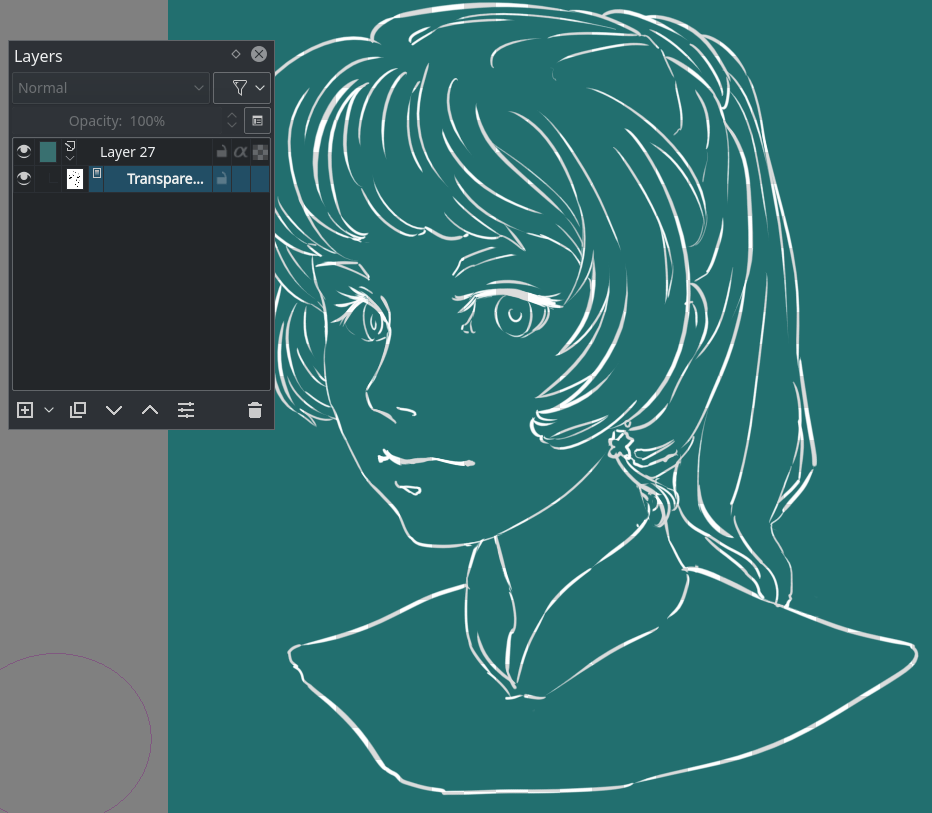
-
Capsize the transparency mask by going to .
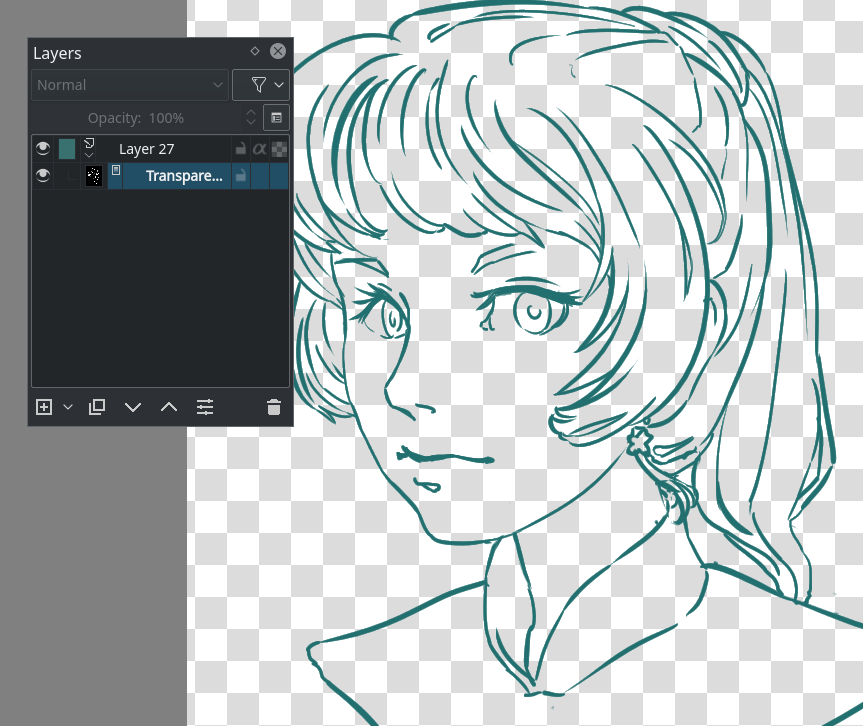
Advantages¶
Actual transparency. You tin likewise very hands putter a pattern on the filled layer where the mask is on without affecting the transparency.
Disadvantages¶
Doesn't piece of work when the line fine art is colored already. We can still get faster.
Using Color to Alpha¶
By far the fastest way to become transparent line art.
-
Select the line art layer and apply the Filter: Color to Alpha dialog under menu item. The default values should exist sufficient for line art.
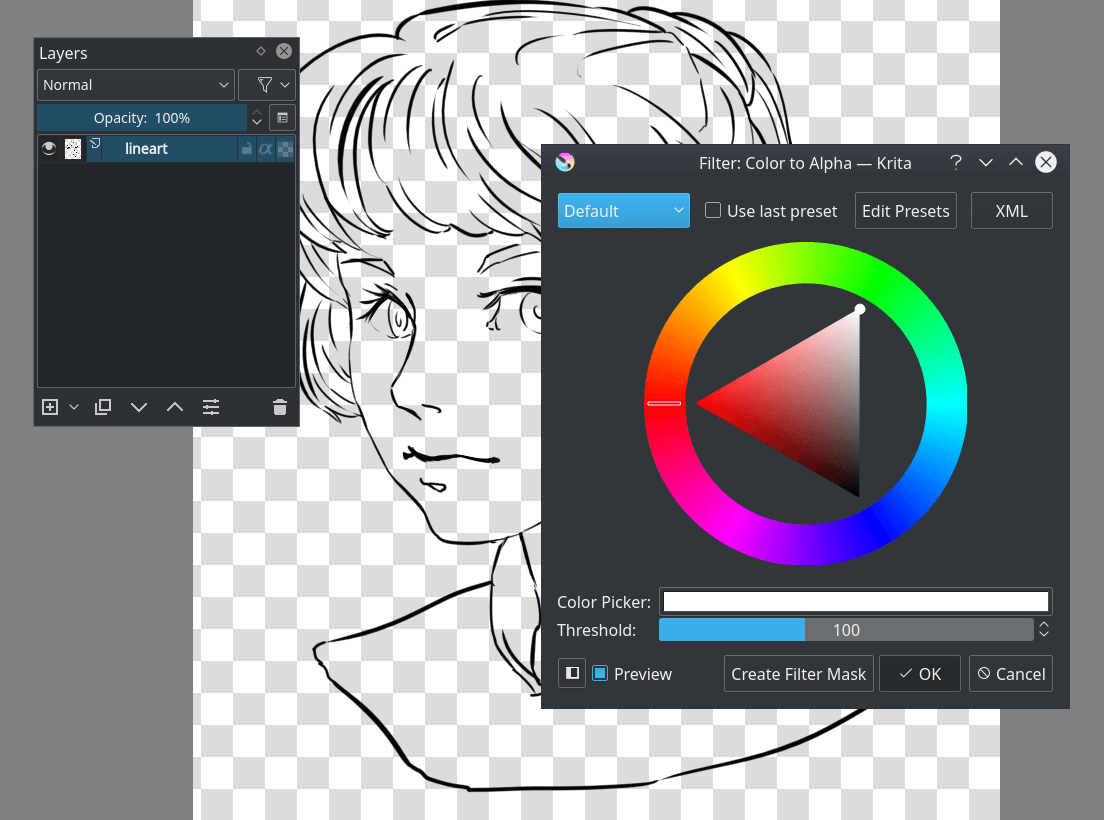
Advantages¶
Actual transparency. Works with colored line art also, because it removes the white specifically.
Disadvantages¶
You'll have to lock the layer transparency or divide out the alpha via the right-click bill of fare if you lot desire to hands color it.
Coloring the image¶
Much similar preparing the line art, there are many different ways of coloring a layer.
You could for example fill in everything by hand, just while that is very precise it likewise takes a lot of work. Let's take a look at the other options, shall nosotros?
Make full Tool¶
In virtually cases the make full-tool can't deal with the anti-aliasing (the soft border in your line art to make it more smooth when zoomed out) In Krita y'all take the abound-shrink option. Setting that to say… 2 expands the color two pixels.
Threshold decides when the fill-tool should consider a different color pixel to be a border. And the feathering adds an extra soft border to the fill.
Now, if you lot click on a gapless-part of the image with your preferred colour… (Call back to set the opacity to 1.0!)
Depending on your line art, you tin do flats pretty quickly. But setting the threshold low tin can result in piffling artifacts around where lines meet:
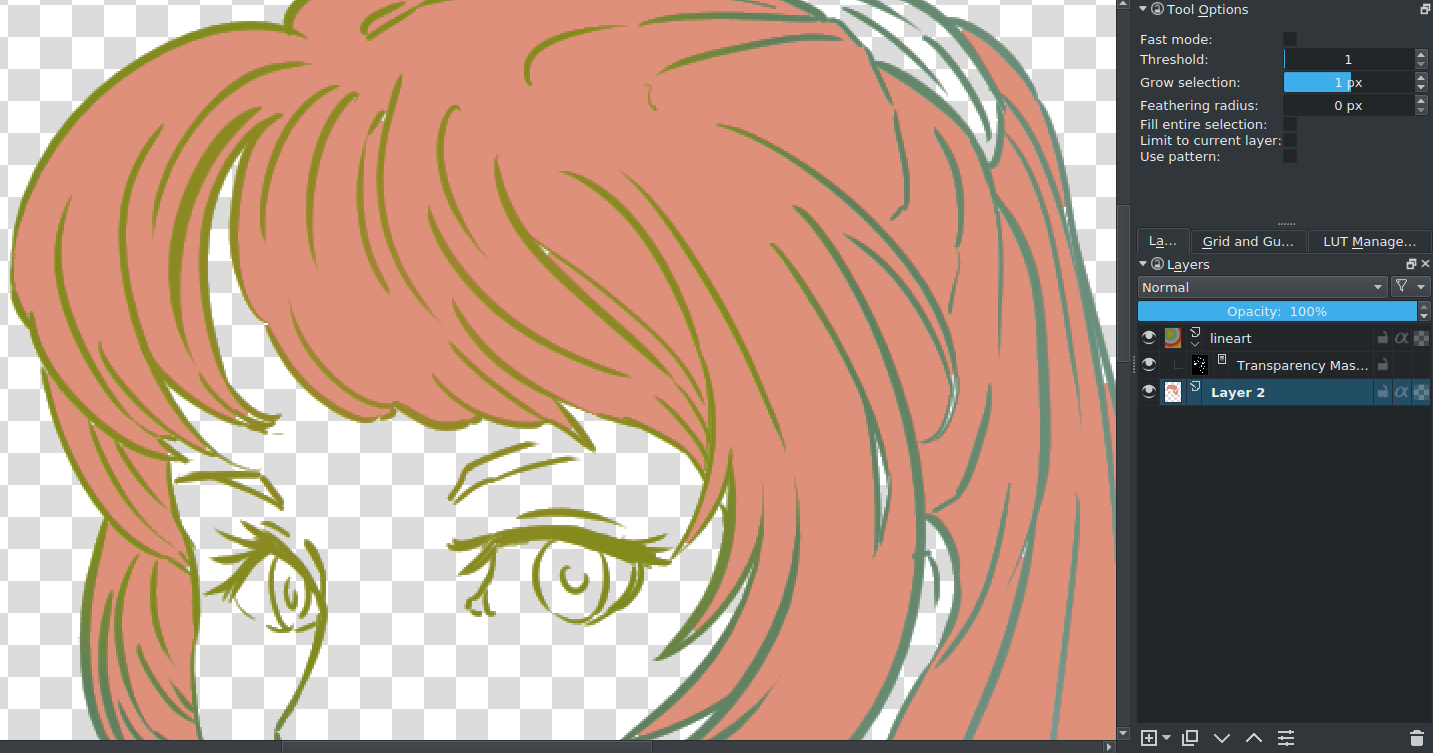
All the same, setting the threshold loftier can end with the fill not recognizing some of the lighter lines. Besides these little artifacts tin can be removed with the brush hands.
Advantages¶
Pretty darn quick depending on the available settings.
Disadvantages¶
Again, not great with gaps or details. And it works best with aliased line art.
Selections¶
Selections work using the selection tools.

For instance with the Path Choice Tool y'all can easily select a curved area, and the with Shift +  (not
(not  + Shift , at that place's a deviation!) you lot can easily add to an existing selection.
+ Shift , at that place's a deviation!) you lot can easily add to an existing selection.

You can likewise edit the pick if you have turned on. Then you can select the global selection mask, and pigment on it. (In a higher place with the alternative selection mode, activated in the lower-left corner of the stats bar)
When done, select the color you want to make full it with and printing the Shift + Backspace shortcut.

You lot tin save selections in pick masks by  a layer, and and then going to . You first need to deactivate a selection by pressing the circle earlier adding a new pick.
a layer, and and then going to . You first need to deactivate a selection by pressing the circle earlier adding a new pick.
This can serve as an alternative way to split out different parts of the image, which is good for more painterly pieces:
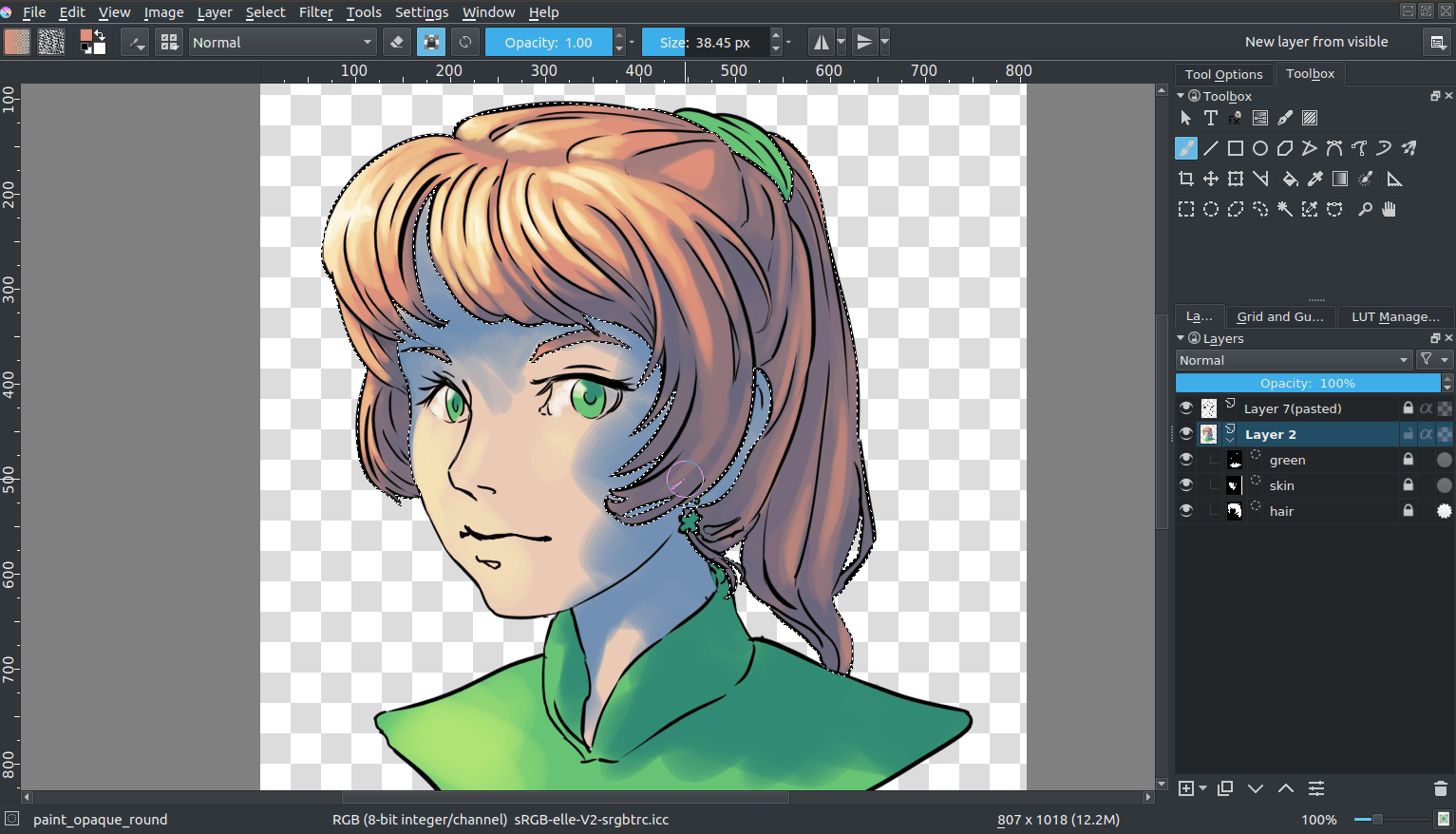
Advantages¶
A bit more precise than filling.
Disadvantages¶
Previewing your color isn't equally piece of cake.
Geometric tools¶
So you take a tool for making rectangles or circles. And in the instance of Krita, a tool for bezier curves. Select the path tool (), and set the tool options to fill=foreground and outline=none. Make certain that your opacity is set to 1.00 (fully opaque).
Past clicking and holding, you can influence how curvy a line draw with the path tool is going to be. Letting go of the mouse button confirms the action, and so y'all're costless to describe the next point.
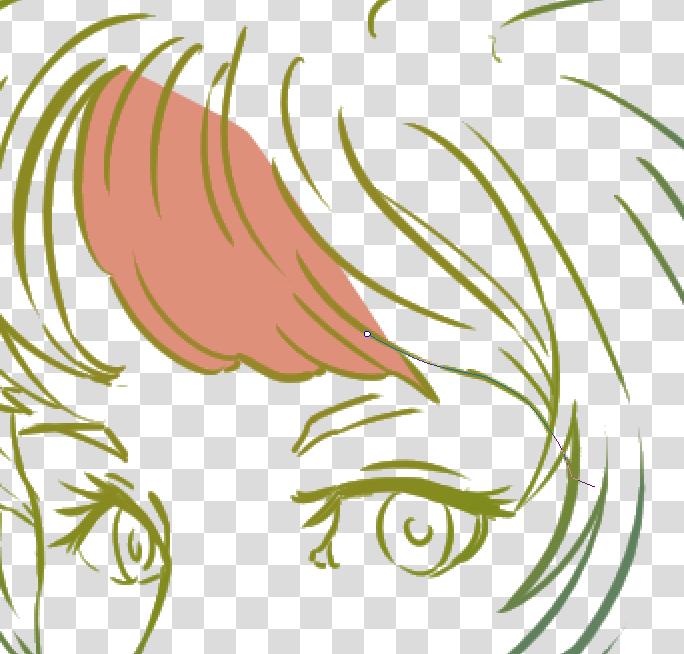
Yous can besides erase with a geometric tool. Just press the E key or the eraser push.
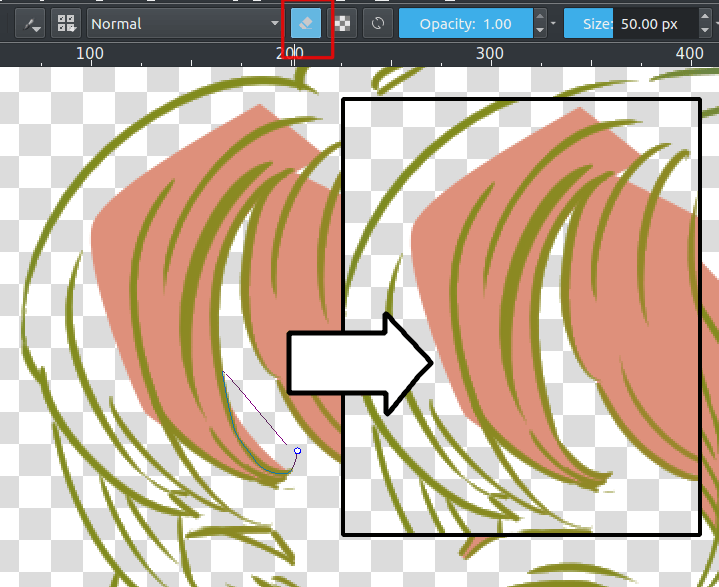
Advantages¶
Quicker than using the brush or selections. Also decent with line fine art that contains gaps.
Disadvantages¶
Fiddly details aren't easy to fill in with this. So I recommend skipping those and filling them in later with a castor.
Colorize Mask¶
And so it works like this:
-
Select the colorize mask tool.
-
Tick the layer you're using.
-
Pigment the colors you lot desire to use on the colorize mask.
-
Click update to come across the results:
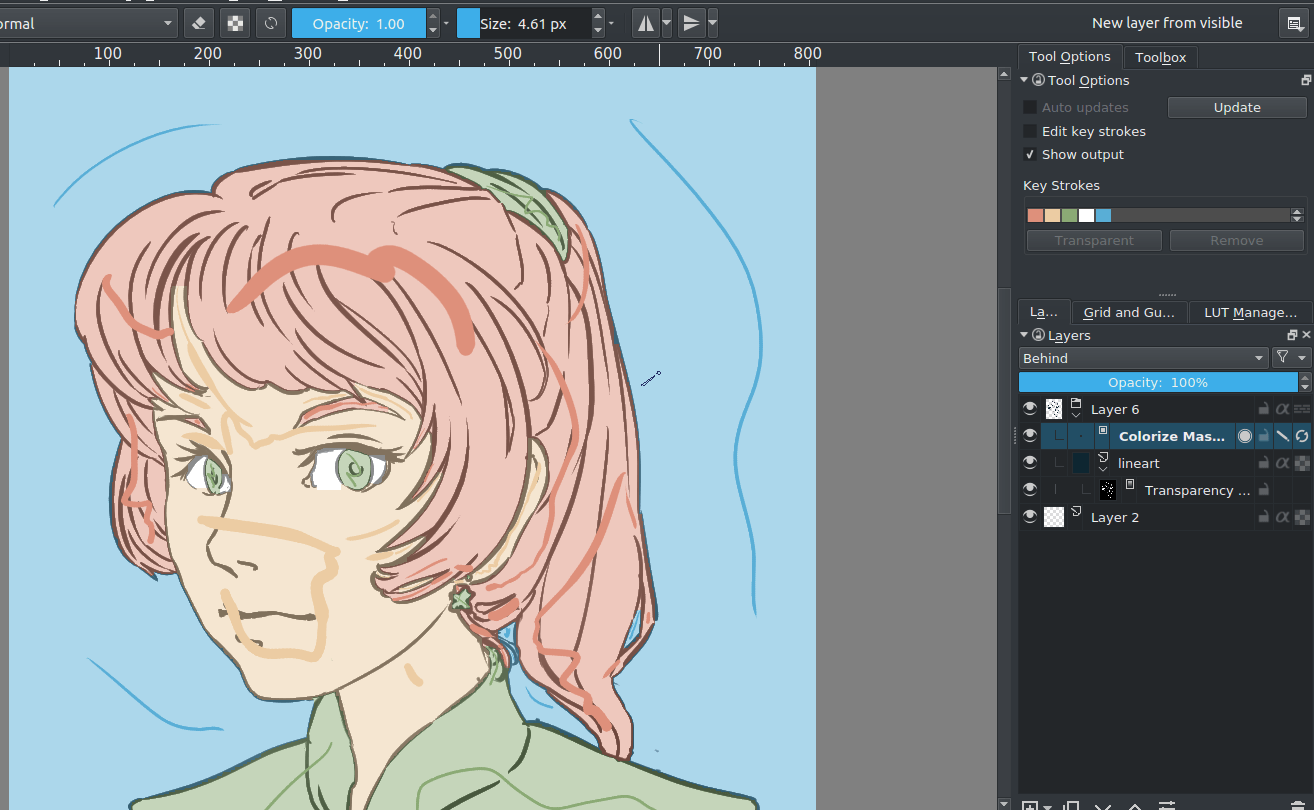
When you are satisfied,  the colorize mask, and go to . This volition plough the colorize mask to a generic pigment layer. So, you lot tin fix the last issues past making the line art semi-transparent and painting the flaws away with a pixel art brush.
the colorize mask, and go to . This volition plough the colorize mask to a generic pigment layer. So, you lot tin fix the last issues past making the line art semi-transparent and painting the flaws away with a pixel art brush.

Then, when you are done, divide the layers via . There are a few options you can choose, but the post-obit should exist fine:
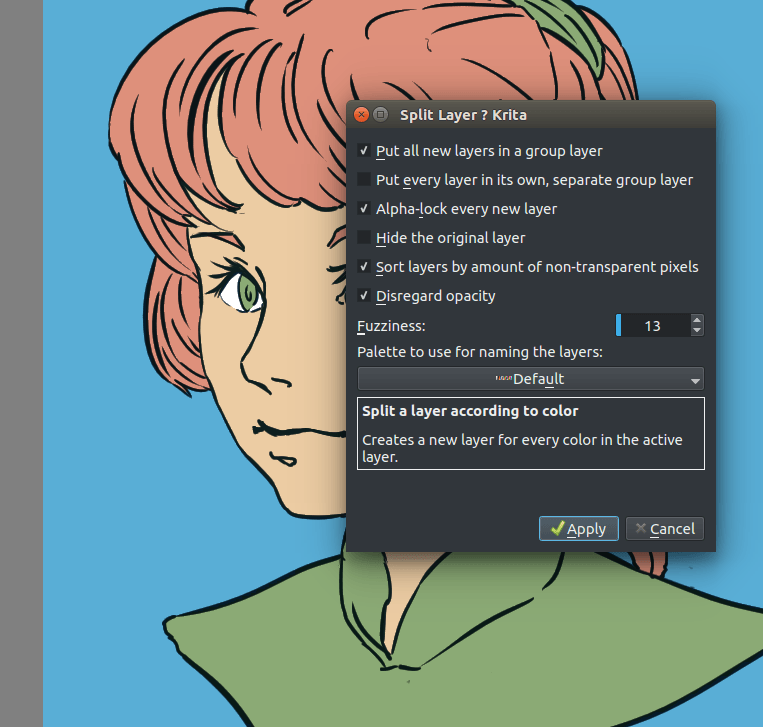
Finally, printing Ok and you should get the following. Each colour patch information technology on a unlike layer, named past the palette in the menu and alpha locked, so you can first painting right abroad!
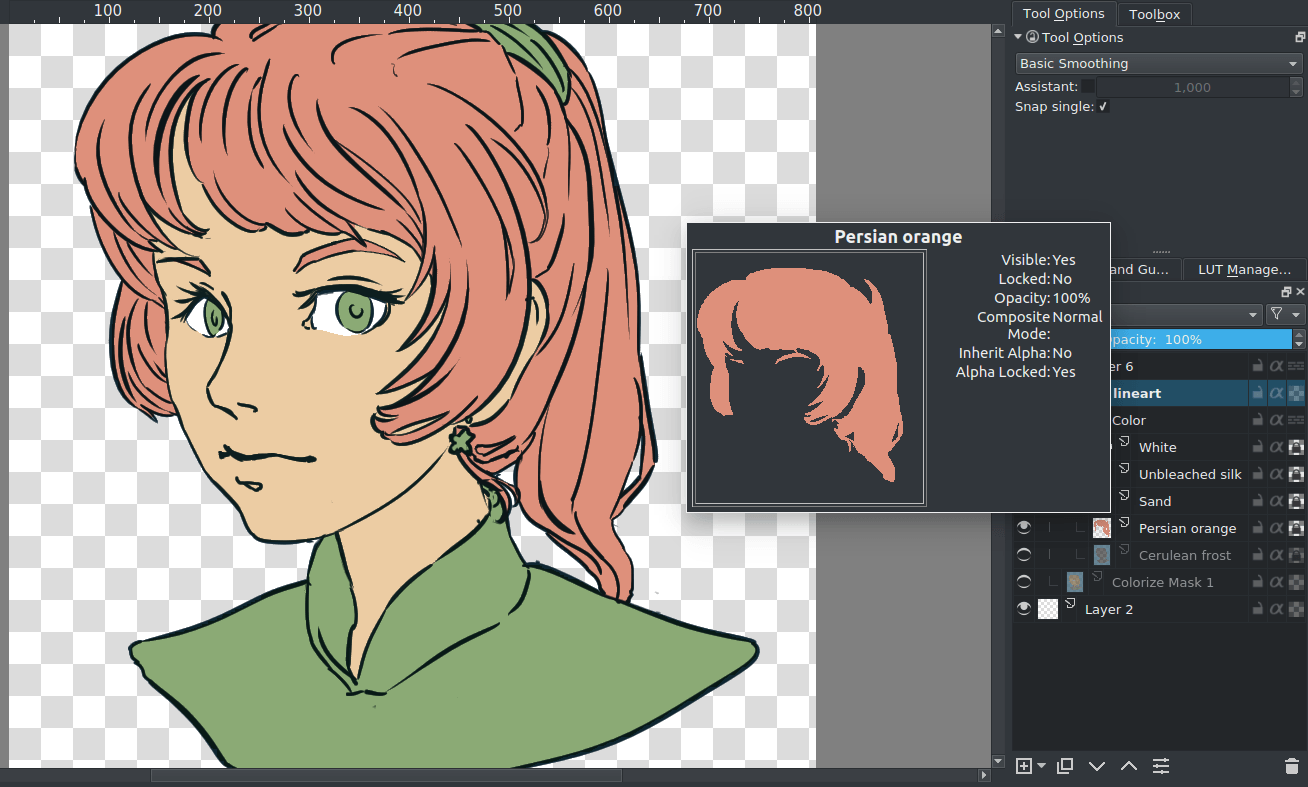
Advantages¶
Works with anti-aliased line art. Really quick to become the base work washed. Tin automobile-shut gaps.
Disadvantages¶
No anti-aliasing of its own. Y'all have to choose betwixt getting details right or the gaps motorcar-airtight.
Determination¶
I hope this has given y'all a good idea of how to fill in flats using the various techniques, too as getting a hand of different Krita features. Remember that a adept flat filled line art is better than a badly shaded one, then keep practicing to become the all-time out of these techniques!
Source: https://docs.krita.org/en/tutorials/flat-coloring.html
Belum ada Komentar untuk "What Is the Art Tool That Allows You to Click and Delete Colors in Art Programs"
Posting Komentar